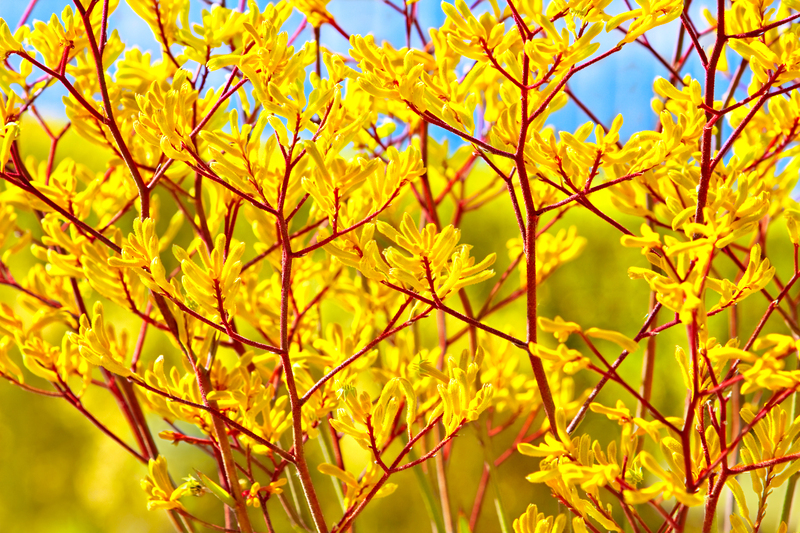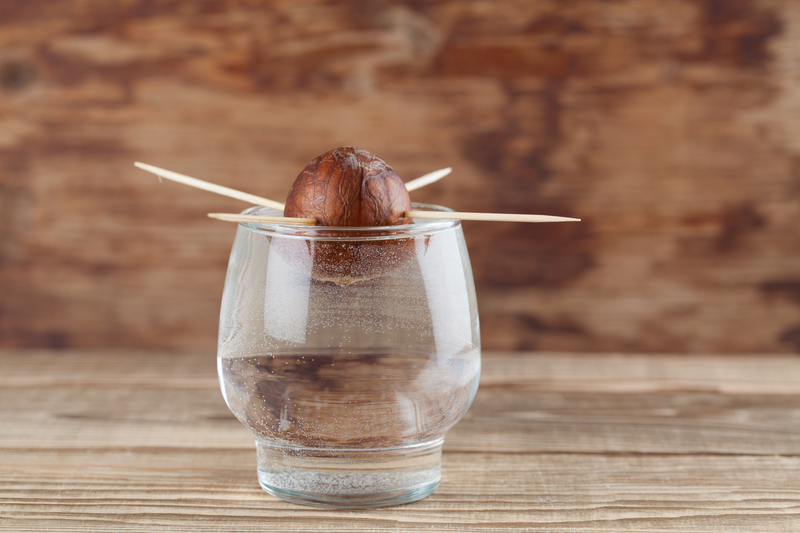Green Thumbs Meet Wagging Tails: Gardening with Dogs
Posted on 14/08/2025
Green Thumbs Meet Wagging Tails: Gardening with Dogs
Gardening and pet ownership are two fulfilling hobbies that bring immeasurable joy and serenity to millions of homes worldwide. But what happens when these two passions collide? Gardening with dogs introduces a unique set of delights and challenges, prompting pet owners and plant enthusiasts alike to create outdoor spaces that are both thriving and safe for their four-legged companions. If you're seeking to combine your love of gardening and your kennel of canine companions, you're in the right place. Welcome to the wonderful world where green thumbs meet wagging tails!
Why Garden with Your Dog? The Benefits of Canine-Friendly Gardening
Combining gardening and dogs isn't just about practicality--it's an opportunity for enrichment, bonding, and healthy outdoor activity. Here are some standout benefits:
- Physical Activity: Both you and your dog enjoy the health perks of moving, digging, and exploring outdoors.
- Mental Stimulation: New scents, sights, and sensory experiences in the garden keep your pup curious and alert.
- Bonding Time: Working together in the garden strengthens your relationship, builds trust, and is simply fun.
- Reducing Destructive Habits: By creating a stimulating outdoor environment, you redirect potentially destructive dog behaviors like digging and chewing away from undesirable areas.
- Eco-Friendly Benefits: Dogs help fertilize and aerate your soil (in moderation), while your plants contribute to a healthier, greener planet.
But merging gardening and pet life is not without challenges. With the right approach and knowledge, your canine-friendly garden can be both beautiful and functional.

Challenges of Gardening with Dogs & How to Overcome Them
Every dog owner who tends a green oasis has likely faced a few muddy paw prints, trampled blossoms, or half-buried toys in the flowerbeds. Here are the top struggles when gardening with dogs--and actionable solutions for each:
1. Digging Dilemmas
Dogs naturally love to dig--a behavior rooted in their wild ancestry. While this is adorable in moderation, it can spell disaster for delicate root systems or carefully tended vegetable beds.
- Solution: Designate a "dig zone." Train your pet to use a specific sand or dirt patch. Bury favorite toys or treats in this area and reinforce positive behavior.
- Raised beds and barriers keep flowers and veggies out of paw's reach.
2. Toxic Plants and Garden Hazards
Many popular garden plants and amendments are hazardous to dogs. Gardening safely with pets means knowing what to avoid and making thoughtful substitutions.
- Common toxic plants: Azaleas, lilies, tulips, daffodils, foxglove, and sago palm.
- Safe alternatives: Marigolds, sunflowers, snapdragons, petunias, rosemary, and basil.
- Mulch caution: Cocoa mulch is dangerous to dogs. Opt for cedar, pine, or untreated wood chips.
3. Chemical Concerns
Fertilizers, pesticides, and weed killers can be lethal to pets. Always opt for dog-safe gardening products.
- Compost wisely: Avoid adding meat, bones, or dairy to compost if your dog may dig there.
- Skip harsh chemicals: Use organic, pet-friendly options or natural pest deterrents like neem oil or diatomaceous earth.
4. Trampled Plants and Paths
Dogs naturally patrol territory. Without clear walkways, even the most well-trained pups may flatten prize petunias.
- Create designated paths: Use stepping stones, gravel, or bark mulch to outline routes.
- Border plants: Robust herbs or shrubs like lavender and rosemary can act as "living fences."
5. Canine Contamination
Dog urine can burn grass and sensitive plants, while droppings can upset the balance of a vegetable garden.
- Encourage a potty area: Train your dog to use one designated spot.
- Frequent cleaning: Pick up droppings promptly and water grass after your pup pees to reduce scorch marks.
Designing a Dog-Friendly Garden
A truly harmonious garden fosters both flora and furry friends. Here's how to design a dog-friendly landscape that serves everyone's needs:
1. Create Zones with Purpose
- Play Zone: Open grassy space for fetch and zoomies.
- Dig Zone: Special corner for canine excavation.
- Rest Zone: Shady, soft area for napping and relaxing.
- Gardening Zone: Raised beds or fenced-off spots for serious planting.
2. Use Robust, Dog-Tolerant Plants
Some plants are built to withstand a little rough-and-tumble. Consider these dog-proof garden plants:
- Sturdy Shrubs: Viburnum, boxwood, and lilac
- Groundcovers: Creeping thyme, Irish moss, and blue star creeper
- Hardy Flowers: Daylilies, coreopsis, and salvia
- Herbs: Parsley, mint, lavender, and oregano (all dog-safe and fragrant!)
3. Install Secure Boundaries
Fencing is critical for creating a safe atmosphere for both plants and pups. Opt for dog-proof fencing that prevents escape and protects your beds.
- Decorative pickets or woven willow can be attractive and functional.
- Temporary barriers (like garden edging or movable playpens) offer flexibility as you train your dog.
4. Choose Lawn Alternatives That Can Withstand Dogs
Traditional lawns can struggle under the rigors of vigorous play and paw traffic. Great dog-friendly groundcovers include:
- Clover: Tolerates foot traffic and recovers quickly.
- Artificial turf: Low maintenance and always green.
- Pea gravel: Easy to clean and doesn't get muddy.
5. Add Water Features
Many dogs love water! Including a shallow pond, sprinkler, or dog fountain adds enrichment and helps keep your pet cool.
Training & Enrichment: Making Dogs a Garden Asset
With positive training, dogs can become garden helpers, not hazards. Here are some techniques to integrate them into your gardening routine:
- Reward boundaries: Use treats and praise to teach pups where they can and can't go.
- Supervised time: Stay with your dog outdoors, correcting missteps and reinforcing good behaviors.
- Enrichment objects: Rotate toys and chewables in your dig/play zones for added interest.
- Include them: Let dogs "help" by carrying small sticks, fetching garden tools, or simply keeping you company.
The Best Dog-Friendly Plants for Your Garden
Choosing the right plants is critical for any pet-safe garden. Here are some of the best options for gardening with dogs:
- Sunflowers: Bright, hearty, and entirely non-toxic.
- Rosemary and Thyme: Aromatic herbs safe for curious sniffers.
- Petunias and Snapdragons: Colorful and sturdy.
- Camellias: Bushy and evergreen--great for garden borders.
- Spider Plants, Sword Ferns, and Boston Ferns: Lush, attractive, and non-toxic to canines.
Always double check with trusted veterinary sources before introducing new flora. For a deeper dive, consult the ASPCA's Toxic and Non-Toxic Plant List for pets.
Common Gardening Mistakes Dog Owners Make (and How to Fix Them)
Even the most conscientious gardener can make errors when juggling paws and petals. Don't worry--perfection isn't the goal, but safety and fun are! Here are common pitfalls to avoid when gardening with dogs:
- Planting toxic species without researching their effect on pets.
- Using harsh chemical fertilizers and pesticides instead of organic, pet-safe options.
- Forgetting to mulch or protect exposed soil so dogs don't dig up prized plants.
- Neglecting secure fencing or adequate boundaries for curious canines.
- Not providing enough stimulation or play areas--dogs WILL create their own fun!

FAQs: Gardening with Dogs
Is mulch safe for dogs?
Not all mulch is safe. Cocoa mulch is toxic and should be avoided. Use cedar, pine, bark chips, or untreated wood mulch instead.
Can my dog eat grass, herbs, or flowers from the garden?
A little grass is normal, but always ensure your plants are non-toxic to pets. Herbs like parsley and basil are safe. Discourage indiscriminate munching with training and supervision.
How do I stop my dog from digging up my garden?
Provide a designated dig area, use raised beds, and reward your dog for using their own "sandbox." Plenty of exercise and play reduce unwanted digging.
Are there any dog-friendly fertilizers?
Yes! Look for organic and pet-safe brands. Avoid blood meal, bone meal, or synthetic chemicals that attract dogs but can harm them.
Conclusion: Growing a Joyful Garden for You and Your Pup
With thoughtful planning, a bit of training, and a lot of love, you can create a garden that's both lush and dog-friendly. Let your outdoor space become a sanctuary for both plants and pets--where hands get dirty and tails keep wagging. Remember, the joys of gardening with dogs extend beyond aesthetics: they nurture the soul and spirit of your home.
So grab your trowel, leash up your gardening partner, and start sowing the seeds of fun and friendship today. When green thumbs meet wagging tails, the results are always beautiful.



